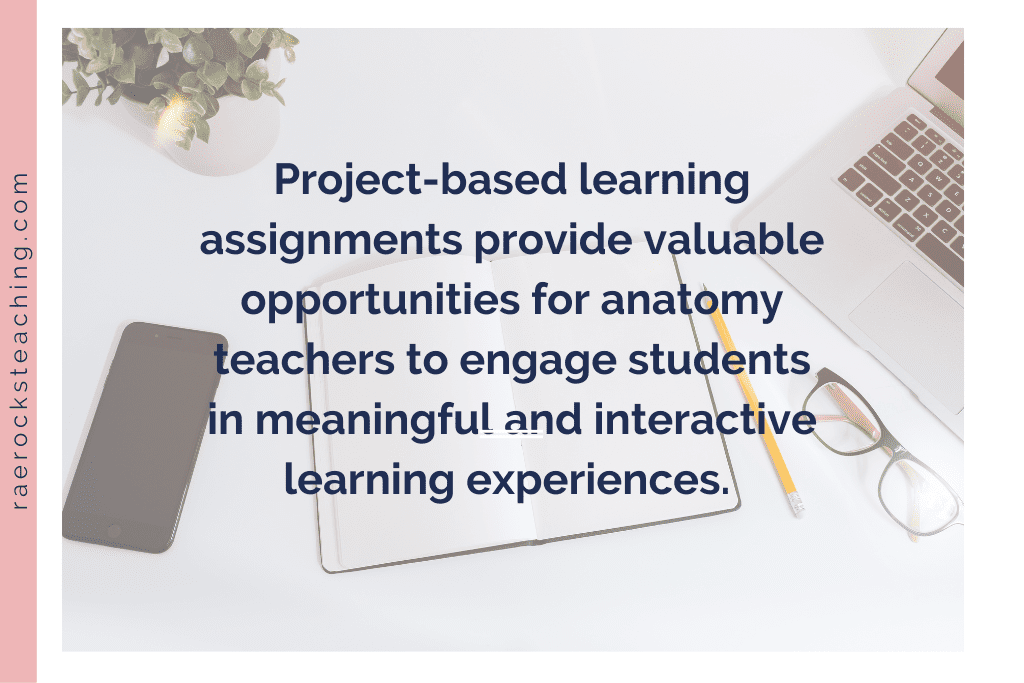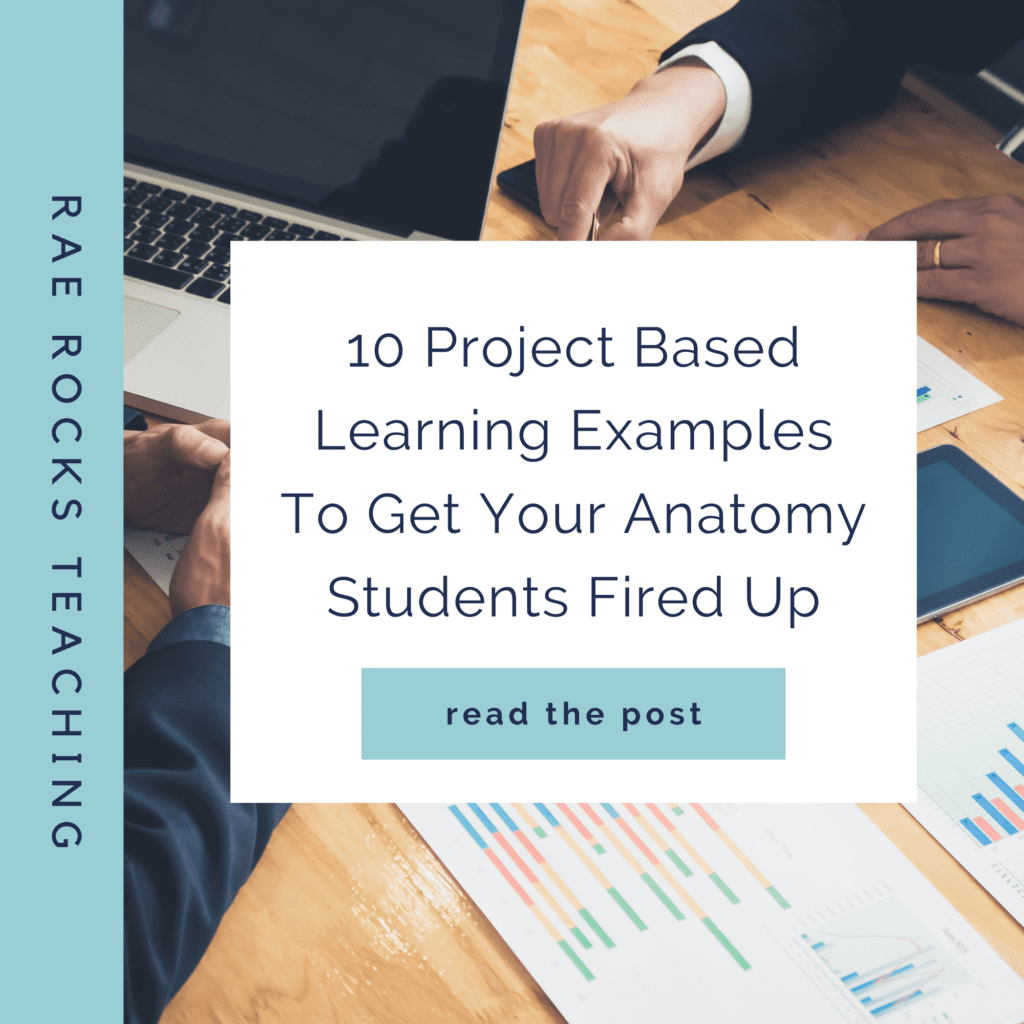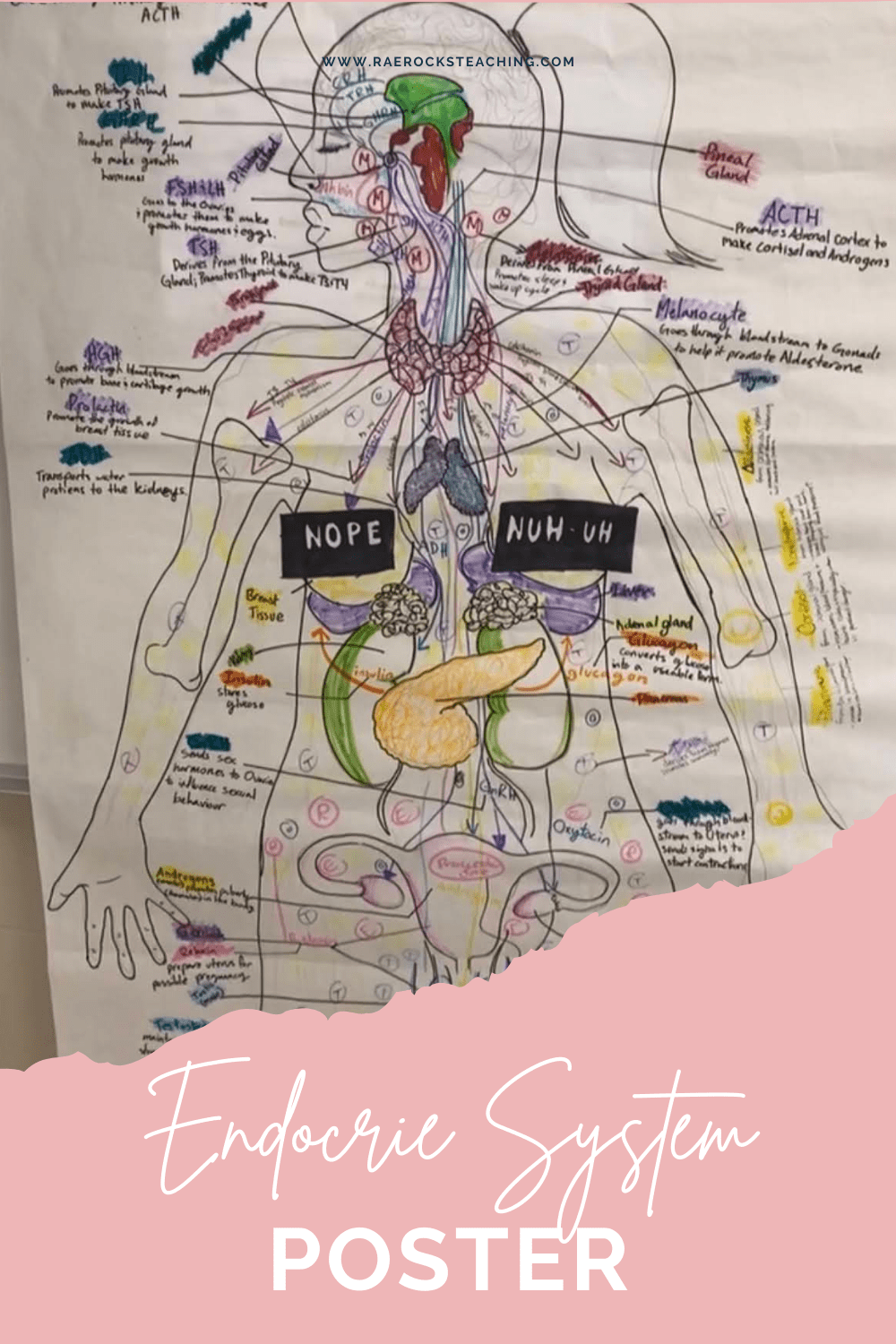If you’re an anatomy teacher, I want to share some project based learning examples that will surely get your students involved. As anatomy teachers, we constantly strive to make learning about the human body an engaging and interactive experience for our students. Project-based learning (PBL) assignments provide a fantastic opportunity to achieve this goal. By incorporating hands-on projects, creativity, and critical thinking, these assignments enable students to delve deeper into the complexities of the human body systems.
Project-based learning benefits
- Increased Engagement and Motivation: PBL assignments capture students’ interest by providing hands-on and interactive experiences. When students actively participate in creating models, designing games, or conducting experiments, they become more engaged in the learning process.
- Application of Knowledge in Real-World Contexts: PBL assignments allow students to apply their knowledge of anatomy in real-world contexts. By designing fitness programs, conducting experiments, or creating informative presentations, students see the practical applications of anatomical concepts.

-
Save
-
- Development of Critical Thinking and Problem-Solving Skills: PBL assignments encourage critical thinking and problem-solving skills. Students are required to analyze information, make decisions, and solve complex problems related to anatomy. Whether it’s designing a board game that effectively teaches about the digestive system or debating ethical issues in reproductive technologies, students develop critical thinking skills by tackling challenging tasks.
- Enhancement of Creativity and Communication Skills: PBL assignments provide opportunities for students to showcase their creativity. Creating models, designing infographics, or crafting comic strips about body systems allow students to express their understanding in unique and imaginative ways.
- Opportunities for Collaboration and Teamwork: Many PBL assignments encourage collaboration and teamwork. Students can work in groups to plan and execute projects, fostering important interpersonal skills such as communication, cooperation, and problem-solving. Collaborative projects also reflect real-world scenarios where individuals with diverse skills and perspectives must work together to achieve a common goal.
- Deeper Understanding and Retention of Concepts: When students actively participate in constructing models, conducting experiments, or creating presentations, they engage with the material in a meaningful way. This hands-on approach promotes a deeper understanding of anatomy concepts as students explore and apply their knowledge.

-
Save
-
- Development of Research and Presentation Skills: PBL assignments often require students to conduct research to gather relevant information about a specific aspect of anatomy. Through this research process, students develop valuable research skills, including information gathering, evaluation, and synthesis.
- Nurturing a Sense of Ownership and Pride in Students’ Work: PBL assignments provide students with a sense of ownership over their learning. When students have the opportunity to make decisions, be creative, and see their projects come to life, they develop a sense of pride and accomplishment in their work. This sense of ownership and pride boosts their motivation, self-confidence, and overall engagement in the subject.

-
Save
-
In this blog post, I am sharing 10 easy to implement PBL assignments tailored specifically for anatomy teachers. So let’s dive in!
Project Based Learning Examples
- Skeletal System Model: Creating a 3D model of the skeletal system allows students to explore the structure and functions of bones and joints. Encourage students to use various materials to construct their models and label the major components. Presenting their models to the class encourages public speaking skills and reinforces their understanding of the skeletal system.
- Digestive System Board Game: Designing a board game centered around the digestive system combines fun and learning. Students can create a game that teaches players about the different organs and processes involved in digestion. By answering questions related to digestion, players advance through the game, reinforcing their knowledge and critical thinking abilities.
- Respiratory System Infographic: Infographics are excellent tools for visualizing complex information. Assign students the task of creating an infographic that illustrates the respiratory system’s structure and functions. Encourage them to use visual elements effectively to explain processes like inhalation and exhalation. The focus should be on clear communication and simplifying complex concepts.
- Muscular System Fitness Program: Linking the muscular system to fitness helps students understand the importance of exercise. Have students design a fitness program that targets specific muscle groups. They should identify exercises, create workout routines, and explain how each exercise affects the muscles. Emphasize the importance of proper form and safety precautions.
- Cardiovascular System Experiment: Through experimentation, students can explore the relationship between exercise and heart rate. Instruct students to design an experiment that measures the effects of different exercises on heart rate. This assignment enhances their scientific inquiry skills, data analysis, and critical thinking as they draw conclusions from their findings.
- Nervous System Comic Strip: Transforming the nervous system into a comic strip engages students’ artistic and storytelling abilities. They can illustrate the journey of a nerve impulse from stimulus to response, accurately depicting structures such as neurons and synapses. Encourage students to incorporate a narrative or dialogue to engage readers while maintaining scientific accuracy.
- Endocrine System Poster: Creating visually appealing posters on the endocrine system develops students’ graphic design skills and understanding of hormonal regulation. Students should highlight major glands and hormones, organizing information logically and explaining the effects of hormones on target organs or body functions. Encourage creativity and effective visual communication.

-
Save
-
- Urinary System Model: Constructing a model of the urinary system allows students to visualize the flow of urine and the structures involved. Students should demonstrate the pathway from the kidneys to the bladder, incorporating components such as ureters and urethra. Presenting their models and explaining the functions of each component encourages effective communication and reinforces understanding.
- Integumentary System Research Presentation: Research presentations on specific aspects of the integumentary system deepen students’ knowledge and presentation skills. Assign students a topic of interest, such as skin disorders or wound healing, and have them create multimedia presentations. Encourage the use of text, images, and videos to educate the class, emphasizing accurate information and visual aids.
- Reproductive System Debate: Engaging in debates about ethical issues related to reproductive technologies enhances critical thinking and argumentative skills. Students can research and prepare arguments for or against topics like in vitro fertilization or genetic engineering. Encourage respectful discussions while considering the scientific, ethical, and social implications of these technologies.
Best Practices for Project-Based Learning
- Clearly define project objectives and expectations.
- Provide scaffolding and resources to guide students throughout the project.
- Encourage students to take ownership of their learning and make decisions.
- Foster a supportive and collaborative classroom environment.
- Incorporate formative assessments to monitor student progress.
- Offer timely and constructive feedback to guide students’ learning.
- Celebrate and showcase students’ final projects to promote pride and recognition.
- Reflect on the learning process and encourage self-assessment.

-
Save
Project-based learning assignments provide valuable opportunities for anatomy teachers to engage students in meaningful and interactive learning experiences. By incorporating these 10 project ideas, we can ignite students’ curiosity, deepen their understanding of the human body systems, and nurture essential skills for their future endeavors. Embrace the power of PBL and witness your students’ enthusiasm for anatomy soar to new heights.
Don’t forget to grab your FREE COPY of The Ultimate Guide to Engage Students To Learn Anatomy | 7 Secrets To Implement Today

-
Save
I love sharing helpful content with y’all and would love to connect on IG or Facebook. I’m on TikTok too! Follow me and send me a DM with what you need more of because I’m here to help! If you are looking for even more inspiration, find me on Pinterest!
Wanna read more?
5 Fun Ways to Engage Students in High School Anatomy
Why You Should Stop Using Worksheets for Anatomy and Physiology
Share via:












One Response